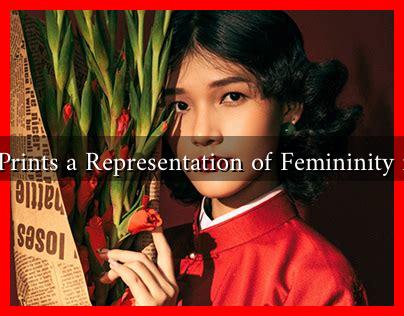-
Table of Contents
- Are Floral Prints a Representation of Femininity in Fashion?
- The Historical Context of Floral Prints
- Floral Prints in Modern Fashion
- Floral Prints and Gender Norms
- Case Studies: Floral Prints in Fashion Campaigns
- The Psychological Impact of Floral Prints
- Conclusion: The Enduring Allure of Floral Prints
Are Floral Prints a Representation of Femininity in Fashion?
Floral prints have long been a staple in the world of fashion, often associated with femininity and grace. From the delicate petals of a rose to the vibrant hues of a sunflower, floral patterns evoke a sense of beauty and softness that many associate with traditional feminine ideals. But is this connection between floral prints and femininity merely a cultural construct, or does it have deeper roots in history and psychology? In this article, we will explore the significance of floral prints in fashion, their historical context, and their impact on contemporary style.
The Historical Context of Floral Prints
Floral prints have a rich history that dates back centuries. Initially popularized in the 18th century, floral patterns were often used in textiles and wallpapers, symbolizing wealth and status. The use of floral designs in clothing became prominent during the Victorian era, where they were associated with femininity and domesticity. This period saw the rise of the “language of flowers,” where different blooms conveyed specific meanings, further embedding floral motifs into the fabric of feminine identity.
Floral Prints in Modern Fashion
Today, floral prints continue to dominate women’s fashion, appearing in everything from casual wear to haute couture. Designers like Dolce & Gabbana, Gucci, and Alexander McQueen have incorporated floral patterns into their collections, often using them to evoke a sense of romance and nostalgia. The prevalence of floral prints in women’s fashion can be attributed to several factors:
- Symbolism of Nature: Floral prints often symbolize growth, renewal, and beauty, aligning with traditional feminine ideals.
- Versatility: Floral patterns can be adapted to various styles, from bohemian to chic, making them suitable for different occasions.
- Emotional Connection: Many women associate floral prints with positive memories, such as springtime or special events, enhancing their appeal.
Floral Prints and Gender Norms
The association of floral prints with femininity raises questions about gender norms in fashion. While floral patterns are predominantly marketed towards women, men’s fashion has also begun to embrace floral designs. Brands like Paul Smith and Etro have introduced floral prints into menswear, challenging traditional notions of masculinity. This shift indicates a broader cultural change where floral prints are no longer confined to women’s fashion but are becoming a symbol of self-expression for all genders.
Case Studies: Floral Prints in Fashion Campaigns
Several fashion campaigns have effectively utilized floral prints to convey messages of femininity and empowerment. For instance:
- Chanel’s Spring/Summer 2019 Collection: Karl Lagerfeld showcased a stunning array of floral prints, emphasizing the beauty and strength of women through bold designs.
- Kate Spade’s Campaigns: Known for its playful and vibrant floral patterns, Kate Spade has consistently used floral prints to represent joy and femininity in its branding.
These examples illustrate how floral prints can be leveraged to create a narrative around femininity, empowerment, and individuality in fashion.
The Psychological Impact of Floral Prints
Research has shown that colors and patterns can significantly affect mood and perception. Floral prints, often characterized by bright colors and organic shapes, can evoke feelings of happiness and tranquility. A study published in the journal “Psychology of Aesthetics, Creativity, and the Arts” found that individuals exposed to floral patterns reported higher levels of positive emotions. This psychological connection further solidifies the association between floral prints and femininity, as they are often used to create a sense of warmth and approachability in women’s fashion.
Conclusion: The Enduring Allure of Floral Prints
Floral prints have transcended their historical roots to become a powerful symbol of femininity in fashion. While they are often associated with traditional gender norms, the evolving landscape of fashion is beginning to challenge these conventions. As more designers embrace floral patterns across genders, the narrative surrounding floral prints is shifting towards inclusivity and self-expression. Ultimately, floral prints remain a timeless representation of beauty, nature, and femininity, continuing to inspire and captivate audiences around the world.

